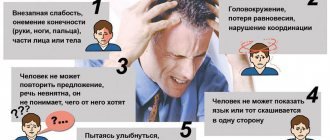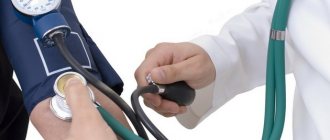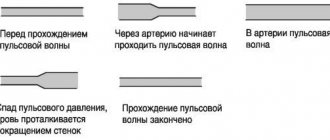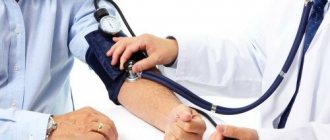Post-Covid tachycardia is a widespread phenomenon. According to the results of a study conducted by Swedish scientists, various types of rapid heartbeat are observed in 25-50% of people suffering from post-Covid syndrome. Sometimes they remain unrecognized due to the insignificant severity or absence of complaints about heart problems.
Consultations are carried out by appointment. Call the operator at number 8(969)060-93-93.
Heartbeat after coronavirus
Until recently, this symptom did not receive enough attention. However, according to research results, it turned out that the manifestation often accompanies post-Covid syndrome, it is simply not always noticeable, and is “lost” behind other complaints.
Sinus tachycardia after Covid appears in 25–50% of the total number of people suffering from “long-term coronavirus”. More often it occurs after a severe course, the development of complications from the respiratory system.
Some patients complain of a strong heartbeat that does not disappear with rest, prevents active movement and worsens the quality of life. But in most cases, changes are determined only during special studies, for example, an orthostatic test or stress tests.
Presumably, the basis is an autoimmune mechanism - an increase in the number of antibodies , which affect blood pressure and heart rate. On average, the violation is detected for 3 or more months. In 9% of people, post-Covid tachycardia syndrome is detected 9 months after recovery.
Experts believe that if symptoms persist for a long time, it is necessary to undergo an examination to exclude cardiac diseases. If the manifestation is mild, the presence of tachycardia may be indicated by nausea, shortness of breath and dizziness when standing up suddenly, that is, when performing an orthostatic test.
The resulting disturbances indicate that the cardiovascular system is unable to provide adequate blood supply to the central nervous system and respiratory tract under sudden stress. At the same time, in people with peripheral autonomic failure, orthostatic hypotension persists throughout their lives, so it is impossible for them to focus on these changes.
High pulse. Why does this happen? Is it dangerous?
By high pulse we mean an acceleration of the heart rate above 90 beats per minute. It must be borne in mind that the pulse range from 60 to 90 implies a somatically healthy body, for example, with coronary heart disease, 90 beats is no longer normal, since in conditions of constant oxygen deficiency, the most complete blood supply is to the coronary arteries (vessels that directly supply the heart itself) occurs at a frequency of 60 to 65 beats per minute.
Consequently, if a patient with the above pathology constantly has a heart rate above 80 beats per minute, then his shortness of breath will gradually increase, swelling of the legs will appear and heart failure will worsen.....
What types of high heart rate are there?
There are several options for high heart rate:
- The pulse rises during exercise or emotional stress, or when using, for example, coffee, smoking, using energy drinks, or fear. When the stress factor disappears, it returns to normal.
- Heart rate rises regardless of physical activity. You can calmly watch TV, or drink tea, or sit on the sofa, lie in bed - and suddenly it begins to rise sharply. You begin to feel weakness, palpitations, there may be other symptoms in the form of increasing shortness of breath, chest discomfort, unfortunately, there are options when a person, at this moment, loses consciousness, which is a prognostically unfavorable sign. This phenomenon either stops on its own (sometimes, on the recommendation of loved ones, Corvalol and other medications available in the house are used, which is not always correct), or the attack stops by calling an ambulance. The duration of this phenomenon can vary - from a few seconds to several days, or, if professional help is not provided, it can end fatally.
- pulse is always high - both day and night (exceeds 90 beats per minute)
In all the above-mentioned situations, the pulse can be either uniform (simply fast), or uneven or irregular (sometimes faster or slower).
In the first situation, when we talk about the presence of some kind of stress factor, this is, as a rule, a normal, physiological response of the body. In the remaining two cases, it is already a pathology and requires clarification of the causes of such phenomena and appropriate treatment.
What is this pathology called?
These phenomena are called tachycardia (tachyarrhythmia). There are many types of arrhythmias. The most dangerous of them are ventricular tachycardias (when the pathological focus is located directly in the ventricles of the heart). Unfortunately, this type of arrhythmias most often manifests itself as a pronounced deterioration in well-being in the form of syncope (loss of consciousness) and, in the absence of outside help, can lead to death.
It is necessary to take into account that the concept of “syncope” is very broad and can occur not only for this reason, but also, for example, during asystole (temporary cardiac arrest) and in other situations.
Why is this happening?
The reasons for these manifestations can be divided into two groups:
1. Having an “wrong” lifestyle that causes overstrain of the heart (anything that changes the electrolyte composition of the heart (balance of potassium, magnesium, calcium, sodium, etc.) can cause a high pulse):
- Alcohol and smoking (we are not trying to take away the joys of life from you, but if genetics has “awarded” you with the ailments described above, then you have to choose in favor of health and give up something. These two “substances” indeed significantly affect the electrolyte composition of the heart muscle)
- Brewed coffee
- lack of sleep, overwork
- energetic drinks
- excessively intense physical activity (otherwise, additional intake of vitamins and microelements is necessary, but even this may not help)
- emotional stress
2. Presence of congenital and/or acquired disease:
- hypoxia (lack of oxygen), for example, lung diseases (COPD, bronchial asthma)
- dehydration, for example, due to overdose of diuretics or insufficient fluid intake.
- pathology of the thyroid gland in the form of thyrotoxicosis (hyperfunction of the thyroid gland)
- autonomic disorders (disorder of the autonomic nervous system is manifested by various functional disorders with a disorder of vascular tone and the development of neuroses
- overweight
- various heart diseases (WPW syndrome, long QT syndrome, Brugada syndrome, short PQ syndrome, coronary heart disease, myocarditis, pulmonary embolism (PE), heart attacks, various cardiomyopathies, etc.)
- anemia (low hemoglobin in the blood)
- fever (an increase in body temperature by one degree increases the pulse by an average of 10 beats per minute).
What examinations should I undergo?
At the outpatient stage, the following examinations are most often prescribed:
- electrocardiogram
- daily (Holter) ECG monitor (quite often the monitor does not detect arrhythmia, since it does not happen every day; in this situation, this study is used, among others, to exclude contraindications when prescribing antiarrhythmic therapy.
- if necessary, a stress test (some variants of arrhythmias appear only during exercise)
- thyroid hormone tests (TSH or T4) to rule out hyper or hypothyroidism
- a routine clinical blood test to determine hemoglobin levels.
24-hour (Holter) ECG monitor
How to treat high pulse?
- exclusion of the provoking factors described above
- treatment of the underlying disease
- if tachycardia persists, symptomatic (conservative) therapy is prescribed; if there is no effect or if there are indications, surgical treatment is performed.
The operation involves cauterizing the area of the heart that causes tachycardia.
Under local anesthesia, a puncture is made in the vessel, usually in the area of the wrist joint or inguinal fold, the conductor is inserted into the heart cavity, the localization of the source of arrhythmia is searched and ablation (cauterization) occurs, and also, in case of life-threatening tachycardias, an ICD (cardioverter) can be installed - defibrillator, a device that releases a shock and restores the rhythm when an arrhythmia occurs)
Unfortunately, surgery to cauterize the source of arrhythmia does not provide a 100% guarantee of the absence of relapse, but the probability of cure is above 90%.
How to stop an attack of high pulse once, you need to consult your doctor, since these drugs are selected individually, taking into account contraindications.
Thank you for your attention. See you!
What goes with it?
Tachycardia is part of the post-Covid syndrome, which is characterized by certain disorders of various organs and systems. There is no clear clinical picture; manifestations differ significantly depending on age, characteristics of the course of coronavirus infection, volume and nature of medical care.
The most common symptom is severe weakness, which does not allow you to get out of bed or carry out normal daily activities. In more than half of the cases, sleep problems are observed: insomnia, daytime sleepiness, disruptions in sleep and wakefulness. Almost half of the patients are bothered by slight chills, sweating, fluctuations in body temperature, and difficulty breathing.
In 45% of patients, psychological difficulties are identified: tearfulness, mood instability, depression. Less common are pain in the heart, cephalalgia, hypertensive crises, skin rashes and hair loss. Disorders of taste and smell are often detected. In 75% of cases, post-Covid syndrome occurs in waves, with periods of improvement and deterioration.
Jumps in pulse and pressure, pre-fainting
Nikolai
2373 views
November 10, 2021
Hello dear doctors, I ask for your help. My name is Nikolai, 35 years old. About 1-1.5 years ago I began to feel tremors, fading and beats in my heart, often single, sometimes in a series, they appeared from several times a day to once a week, and in September of this year I turned to a cardiologist about this issue. They did an ultrasound of my heart and put on a holter for 24 hours, and sent me home. By the way, I learned for the first time from the ultrasound that I have a bicuspid aortic valve (but supposedly a variant of the norm, as they explained to me). According to the Holter, they said that I needed to give a load in the evening, which I did (I did pull-ups and squats a little), after which my pulse increased to 160, I felt bad, my legs, face, tongue went numb and my arms “wronged” with cramps, I couldn’t gasping for air, my parents got scared and called an ambulance, which upon arrival did an ECG and stated that everything was normal - I was re-exercising and I was afraid of the holter on my chest. Next, taking readings from the Holter ECG for the next trace. day I was diagnosed with 7 supraventricular, 8 ventricular extrasystoles and 2 pronounced sinus arrhythmias. And in general, in the end they said that everything was fine, to normalize the rhythm, take Concor 2.5 mg in the morning, Magne B6 +, you can add atarax (in microdoses) for peace of mind and visit a neurologist (who, by the way, prescribed me to drink Grandaxin and Eltacin against the background of VSD, as he put it and everything is back to normal..... Actually, a month has already passed and even more, I am taking Eltacin and Grandaxin (I tried Concor once 2.5 mg and stopped, dizziness began from it).And everything would be fine, but for 2 weeks I began to clearly feel my heartbeat, especially in a dream, the pulse began to jump up to 120, and the pressure up to 140, more often after some time after getting out of bed, at breakfast, and all this is accompanied by chills, a feeling of internal trembling, lack of air, pain in the left half of the chest, fear, fear of death, a feeling of tingling (numbness) in the legs, a feeling of a lump in the throat. I had to call an ambulance, while I was waiting, I took Losortan 50 mg, upon arrival, the team gave Moxonidine under the tongue, did an ECG (they said everything was normal) and left an Anaprilin tablet if the pulse rises again. All this happened on Friday 06.11.21, since then every day I have something like panic attacks in anticipation of these attacks, my blood pressure and pulse jump, colitis in the heart area. Yesterday I had to take Concor half a tablet 1.25 mg, the pulse returned to normal to 57-65 while lying down, if you get up it’s 65-85, but from Concor I got sick and dizzy again and therefore today, during the tachycordia period, I took Anaprilin 10 mg under the tongue, but the pressure dropped to 140 Gradually, I didn’t start taking anything. Now, after Anaprilin, the pulse is 70 at rest (if you stand up, it immediately rises), but I feel that despite this, the heart does not beat evenly, as if out of order, with slightly noticeable jolts. Last night I hardly slept - I feel a strong heartbeat with a pulse of 55-65, which prevents me from falling asleep. State of anxiety and weakness. I haven’t left the house for 4 days, I’m afraid of these attacks or panic attacks? What is this condition? Why did it start suddenly? Pathology? Why does my heart rate increase if I move? What to do about it, what to do? But tomorrow everything will happen again, I’m in a panic. And I apologize for such a voluminous presentation of the essence of the problem, but I tried not to miss all the important details relevant to the matter.
Age:
35
The question is closed
heartbeat
heart area
lack of air
Why does your heart rate increase?
How to treat the disorder is decided after establishing the etiological factors. The most serious causes are myocarditis and toxic damage to the heart muscle in severe cases of COVID. In some patients, the symptom occurs as a general reaction to the presence of pathogenic agents in the body.
In many cases, increased heart rate is caused by high levels of stress. It should be taken into account that against the background of coronavirus, other diseases may worsen or manifest.
Danger
Tachycardia is a dangerous condition. Great threats to health, and sometimes to life, arise when an elevated heart rate (more than 100 beats per minute) persists for a long time. In this case, the likelihood of cardiac arrest increases. Therefore, it is important to know why a high pulse occurs at normal pressure and what to do to stabilize the condition.
With tachycardia, there are risks of impaired metabolic processes, which can provoke the development of immunodeficiency and cause other negative consequences. Very often, fainting occurs regularly against the background of tachycardia. This may cause injury. Also, the pathological condition can provoke a heart attack and increases the risk of thromboembolism.
How to help
What to do depends on the severity of the attack. If the symptoms are mild, it is enough to provide rest and give a decoction of yarrow, valerian root and lemon balm. It is important to pay attention to the psychological state. For emotional instability, you can use mild herbal remedies with a calming effect. If paroxysms recur, you should consult a doctor.
In case of a severe attack, you need to call an ambulance, lay the person in a comfortable position, unfasten tight clothes, loosen the belt, open the window for sufficient fresh air. Severe cardiac tachycardia after coronavirus may be accompanied by panic. It is impossible to give the patient sedatives - this can distort the clinical picture and complicate diagnostic measures.
Reasons for increased heart rate at normal blood pressure
Before you run to specialists and complain about a rapid heartbeat with blood pressure that does not deviate from the norm, you need to make sure that the pulse is measured correctly. Many people prefer to record readings by placing their fingers on the neck, since heartbeats can be felt more easily there, but this is incorrect.
When exposed to large-diameter neck vessels, the rhythm of heart contractions may change, and then the result obtained will not correspond to reality. You need to measure your pulse only on your hand while at rest, and you should not move, talk or laugh.
Why is a rapid pulse observed with normal blood pressure readings:
- motor and physical activity;
- chronic sleep deprivation syndrome, when a person works a lot, does not rest and sleeps less than 7 hours a day;
- fear, stress, conflict situation;
- violent positive and negative emotions.
But if an increase in heart rate is recorded regardless of these factors, this condition should not be ignored - it may indicate problems and diseases developing in the body.
Impact of physical activity on heart rate
Usually, if the blood pressure is normal and the pulse is high, this condition is observed after intense sports (running, football, fitness, wrestling, weightlifting). After a person has completed the workout, the heart rate should return to normal on its own within 10–15 minutes. If this does not happen, this syndrome should be taken into account and consult a doctor.
Prolonged heart rate indicators with normal blood pressure are:
- after light to moderate physical activity (walking, several dozen squats, bending), the heart rate should return to normal on its own within 2–3 minutes;
- after moderate and high intensity exercise (running, lifting weights, training in the gym, climbing stairs for about half an hour in a row), the pulse should return to normal within 10–15 minutes.
When reality does not meet these standards, you need to be examined for early signs of heart failure. The required list of examinations will depend on the clinical symptoms, the frequency of cases when the pulse is elevated and other external and internal factors.
Stress and increased heart rate
Common causes of high heart rate due to normal or low blood pressure also include stress. After a violent manifestation of joy (and this is also considered a stressful situation for the body, since the hormone adrenaline is produced in large quantities, which affects the heart rate) or sadness, the pulse should return to normal on its own. But if conflicts and stress are constant companions of a person’s life, persistent tachycardia occurs when the heart beats more than 100 times per minute.
At the initial stage of pathology, when it is possible to eliminate its symptoms physiologically, without the use of drugs, measures must be taken immediately.
This means eliminating provoking factors from life - if conflicts occur at work, you should change it, if there is a misunderstanding with your wife or husband, you need to reconsider your relationship and change something radically. If necessary, the doctor can recommend sedatives that will strengthen the nervous system and help normalize heart function.
Chronic inflammatory processes in the body
If, without lowering the pressure or increasing it, the pulse still jumps regularly, this sign may indicate the presence of chronic foci of infection in the body. At the same time, the load on the heart increases, and it contracts with a vengeance, trying to independently eliminate the cause of this phenomenon.
The main cause of complications on the heart muscle is considered to be chronic tonsillitis (tonsillitis). If a person suffers a disease on his feet, even after eliminating the pathogen (virus or bacteria), it remains active and negatively affects the connective tissues of the internal organs. Also most likely to cause a rapid pulse are:
- laryngitis, pharyngitis, chronic inflammation of the ligamentous apparatus;
- runny nose, sinusitis;
- diseases of the bronchopulmonary system - bronchitis, tracheitis, pneumonia;
- problems with the genitourinary system – urethritis, cystitis;
- pathologies of the liver, gall bladder, pancreas - cholecystitis, pancreatitis, biliary dyskinesia;
- the presence of carious teeth in the oral cavity, chronic inflammatory gum disease.
To reduce the risk of developing tachycardia and arrhythmia as a result of chronic infections, inflammatory diseases should be treated in a timely manner, problems with carious teeth should be eliminated, and attention should be paid to the health of the genitourinary system.
Thyroid diseases
Many patients with hypothyroidism complain of a simultaneous increase in blood pressure and heart rate, but the pulse can increase even with unchanged blood pressure. It remains stable around 100 beats per minute even in the absence of physical activity and stress.
If the pressure does not rise or fall, and the pulse is elevated, the syndrome sometimes indicates problems with the thyroid gland
In addition to increased heart rate, problems with the thyroid gland are also manifested by additional symptoms:
- epigastric pain, feeling of nausea;
- tendency to constipation or diarrhea;
- in women - menstrual irregularities, in men - low level of sexual desire;
- deterioration of memory and attention.
You should contact an endocrinologist if such symptoms appear simultaneously with an increase in heart rate of unknown origin. This will facilitate diagnosis and speed up treatment.
Iron-deficiency anemia
When there is an insufficient amount of hemoglobin in the blood, the supply of oxygen to the internal organs is reduced, which causes greater stress on the heart - it is forced to contract more often in order to stabilize the saturation of the systems. Anemia develops with a lack of iron or as a result of the loss of a large amount of blood, but the first option is the most common.
What can be done to restore normal hemoglobin levels and normalize heart rate? Eat more offal (pork and beef liver), nuts, red vegetables and fruits (carrots, beets, apples), buckwheat, spinach, legumes and dried fruits.
Osteochondrosis
Osteochondrosis is considered another pathology due to which pulse surges can be observed while blood pressure remains unchanged. Often, an increase in heart rate is observed when the cervical or thoracic spine is damaged; in addition, additional symptoms are observed: pain in the chest and neck, deterioration in concentration, inability to concentrate on a specific task, and a feeling of stiffness.
It should be clarified that an increase in heart rate with osteochondrosis may not be observed regularly, but only appear after physical exertion and a long stay in an uncomfortable position.
Diseases of the cardiovascular system
With diseases of the heart and blood vessels, for example, with hypertension, the pulse may increase simultaneously with an increase in blood pressure, and with hypotension (low blood pressure) - against the background of a drop in pressure. Or the increase in heart rate is paroxysmal in nature, when the patient complains of chest pain, fainting, dizziness and a general deterioration in well-being.
Diagnostics
The nature of the pathology is determined by a therapist or cardiologist. There are no strict criteria for post-Covid syndrome. Whether there could be a connection between tachycardia and COVID is determined taking into account a history of infection. If the disease has not been verified, the patient is asked to take a test for specific antibodies.
To assess the cardiovascular system, electrocardiography, echocardiography, and Holter monitoring are prescribed. The need and scope of further procedures are determined taking into account the results. A biochemical blood test, coagulogram, spirometry, ultrasound of the abdominal organs and other studies may be required. If you have increased anxiety, you should consult a psychologist or psychotherapist.
Frequent and rare pulse: what does it mean?
Pulse is an important parameter that reflects the work of the heart.
Various changes in the characteristics of the pulse (frequency, rhythm, filling, symmetry) may indicate changes in our body.
In everyday life, we often pay attention to the frequency and rhythm of the pulse.
Normally, a healthy person has a normal pulse rate of 60-90 beats per minute. Anything less than 60 beats per minute is bradycardia, or a slow pulse. Anything above 90 is tachycardia, rapid pulse.
The pulse is a variable value and in a healthy person it changes its frequency with various changes during the day.
Rare pulse - may indicate pathology of the cardiovascular system, be a manifestation of weakness of the sinus node, various heart blocks, but can also be a normal option for physically active people. For example, athletes may have a heart rate of 45-50 beats per minute, but still feel good.
If a rare pulse is accompanied by a deterioration in health, weakness, dizziness, shortness of breath, fainting, and the patient is not taking medications that affect the pulse rate, this is a reason to immediately consult a doctor.
An increase in heart rate of more than 90 beats per minute more often indicates intoxication (when the temperature rises, the pulse always increases), as well as during physical exertion, stress, and anxiety. But it can also be a manifestation of rhythm disturbance - atrial fibrillation, paroxysmal supraventricular tachycardia, sinus tachycardia or other diseases: thyroid gland - thyrotoxicosis, anemia, obesity and others.
The pulse is usually determined on the radial artery, but it can be determined on the carotid, femoral, and temporal arteries.
The second important characteristic of the pulse is rhythm.
If the intervals between pulse beats are the same, then the pulse is rhythmic; if they are different, then the pulse is arrhythmic and indicates a rhythm disturbance.
Any changes in pulse not related to physical activity or stress, accompanied by changes in well-being - chest pain, weakness, shortness of breath, dizziness - require an immediate examination by a doctor with an ECG!
For each patient with a pulse disorder, the scope of examinations is determined by the doctor at the appointment, taking into account his age and existing diseases.
Examinations may include:
ECG, daily ECG monitoring (Holter), echocardiography (ultrasound of the heart), detailed blood test, biochemical blood test, blood glucose, thyroid hormones (TSH), ultrasound of the thyroid gland - this is the minimum amount of examination necessary to clarify the cause of the pulse rate abnormality.
It is important to discuss with your doctor what needs to be done in your case, because everything is individual. Self-medication in such conditions is unacceptable!
Be attentive to your health!
about the author
- Rastorgueva Marina Dmitrievna
- General practitioner of the first category, head of outpatient department No. 1
- All publications by the author
Treatment
The treatment plan is drawn up individually, taking into account the detected pathology, age and general condition of the patient. Heart rate is normalized with beta blockers. A list of additional recommendations may include increasing the amount of fluid you drink and wearing compression garments.
Depending on other manifestations, the patient is prescribed drugs to stabilize blood pressure , restoratives, vitamin complexes, medications with a sedative effect, etc. It is advised to normalize the daily routine, allow enough time for rest, minimize stress, do not overload, and move regularly.
Interruptions in the heart: what causes the heart to work incorrectly?
Interruptions in the heart (impaired heart rate, arrhythmias) occur due to a disruption in the formation of an excitation wave in the sinus node and its further propagation.
There are several types of heartbeat disorders - tachycardia, bradycardia, extrasystole. Normally, the contraction frequency is 60-90 beats per minute with equal intervals between them.
Types and risk factors
With tachycardia, the heart rate increases to 100 beats per minute.
The following types of tachycardia are distinguished by location:
- sinus;
- atrial;
- ventricular;
- atrioventricular.
With the flow:
- acute form (first appears in the acute period of any disease);
- paroxysmal (characterized by inconsistency, there may be periods of normal heartbeat or a single episode of arrhythmia may be recorded);
- recurrent (repeated heart failure);
- constant.
8
24/7
Depending on the pathogenesis:
- returnable;
- automatic;
- focal.
One form of tachycardia is atrial fibrillation. It consists in their frequent and irregular reduction. It is rarely diagnosed at a young age. It can be asymptomatic for a long time, but carries a high risk of death, as it is associated with the development of heart failure and thrombus formation.
Frequent and regular contraction of the atria is called flutter. Characterized by the occurrence of attacks, the chronic form is practically not recorded. Atrial flutter quickly leads to heart failure with the formation of edema.
However, it should be noted that there is also physiological tachycardia - this is a normal reaction of the body to increased physical activity, increased temperature, and excitement. Such cases do not require treatment and are not dangerous.
Tachycardia can also be a reaction to taking a number of medications and goes away upon completion of treatment.
Bradycardia is a slowing of the heart rate to less than 60 beats per minute.
Along the flow they distinguish:
- paroxysmal;
- chronic form.
Type:
- sick sinus syndrome;
- atrioventricular blockade.
With atrioventricular node weakness syndrome, there is a decline or shutdown of the activity of the sinus node, where the excitation impulse necessary for the functioning of the heart occurs.
With atrioventricular blockade, there is a disturbance in the conduction of electrical impulses to the ventricles. Both forms are characterized by a progressive course.
Atrioventricular blockades can be of varying degrees - there are 3 degrees in total. With the second and third, there is a high probability of cardiac arrest.
Extrasystole is the occurrence of additional contraction of the heart muscle.
There are several classifications according to which they are distinguished:
Depending on location:
- sinus;
- atrioventricular;
- atrial;
- ventricular extrasystoles.
By frequency:
- rare (less than 10 per hour);
- medium frequency (10-30 per hour);
- frequent (more than 30 per hour).
Risk factors for heart failure include:
- Hereditary predisposition. Arrhythmias are often the result of congenital anomalies.
- Thyroid diseases. With hyperfunction, increased production of hormones occurs and metabolic processes accelerate. This leads to increased and irregular heartbeat. As a result, atrial fibrillation develops. With hypofunction, bradycardia or extrasystole may develop.
- High blood pressure. Leads to hypertrophy of the wall of the left ventricle, the process of impulse transmission is disrupted.
- Diabetes. In the decompensated stage, the risk of developing arterial hypertension and ischemia increases significantly.
- Electrolyte concentration. Its change leads to disturbances in the electrical activity of the heart muscle.
8
24/7
Causes
The causes of tachycardia can be divided into several groups:
- Caused by damage to the heart muscle. This group includes heart attacks, myopathies, ischemia, chamber hypertrophy, myocarditis, etc.
- Associated with metabolic disorders in the body. Decreased potassium and magnesium levels, toxic effects of alcohol, nicotine, renal failure.
- Impact of medications. Heart rhythm can change under the influence of glycosides, stimulants of the sympathetic nervous system.
- Thyroid diseases, hyperthyroidism, diabetes.
The reasons for the development of extrasystole are similar to the reasons for the occurrence of tachycardia. Bradycardia can occur due to the following reasons:
- factors related to heart function, as with tachycardia;
- increased levels of calcium, magnesium;
- diseases of the esophagus, stomach;
- the use of antiarrhythmic drugs, as well as some analgesics, in drug therapy;
- vagotonia;
- malfunction of the thyroid gland.
Symptoms
The following symptoms are characteristic of tachycardia:
- interruptions in the heart;
- increased heart rate or missed beats;
- rapid and uneven heartbeat;
- increased fatigue under standard loads;
- shortness of breath, feeling of lack of oxygen during physical activity;
- dizziness, circles before the eyes, fainting;
- drop in blood pressure;
- chest pain.
Extrasystoles, as a rule, are not accompanied by the occurrence of additional symptoms. There may be interruptions in the heart, a feeling of increased shock or cardiac arrest.
Symptoms characteristic of bradycardia:
- slow heartbeat;
- feeling of cardiac arrest, irregular heartbeat;
- severe weakness, inability to perform usual workload;
- changes in blood pressure levels;
- disturbances of consciousness, deep fainting is possible;
- the occurrence of chest pain not associated with physical activity.
Diagnostics
When heart problems begin, what should you do first? It is necessary to undergo diagnostics that will confirm the arrhythmia and help identify concomitant diseases.
Diagnosis of arrhythmias involves a thorough examination of the patient’s complaints, after which standard examinations are carried out:
- ECG;
- Holter monitoring – registration of impulses using a special device during the day;
- Ultrasound of the heart - performed through the chest or esophagus, can detect clots.
Treatment
How to treat heart failure? When treating tachycardia, one of 2 possible treatment tactics can be chosen:
- restoration and maintenance of normal heart rhythm;
- control of heart rate without restoring rhythm.
Treatment of heart failure must begin as early as possible. The general principles of treatment are as follows:
- the need to restore heart rhythm in young patients without cardiac dysfunction;
- maintaining heart rate in elderly patients at a level not exceeding 90 beats at rest and not more than 115 during exercise;
- using anticoagulants to prevent clot formation;
- Identification and elimination of the causes that caused interruptions in the functioning of the heart.
Heart failure can be treated in several ways:
- “Restarting” the heart involves the use of medicinal methods (Propaphenol, Flecainide), an electrical method (discharge) or a hybrid option.
- Drug therapy to normalize the rhythm involves taking beta blockers, calcium channel blockers and glycosides.
- Ablation may be used to restore normal rhythm. During the procedure, those areas where pathological electrical activity is observed are destroyed. Cardiac ablation can be performed by catheter or by open surgery (in cases where intervention is necessary for other reasons).
- Special devices can also be installed to regulate the rhythm frequency. The methods used depend on the patient's condition. In severe forms of heart failure, surgery is indicated, while non-life-threatening conditions can be corrected by taking medications in combination with ablation.
Treatment of extrasystole involves taking beta blockers, as well as ablation of the area where the additional impulse originates.
Treatment of bradycardia involves eliminating the root cause that caused the slow heart rate. Drug treatment consists of taking xanthines and anticholinergics. If there is a risk of cardiac arrest, a pacemaker is installed.
Forecast
Heart failure can be a warning sign of life-threatening conditions. Possible development of stroke and heart failure.
When blood flow is slow, clots can form. When they enter a vessel and block it, a stroke occurs, which can be fatal.
Heart failure may also develop, in which the efficiency of the heart decreases, it runs idle, and wears out faster.
Interruptions in heartbeats caused by non-cardiac pathologies can be corrected when the root cause is eliminated.
Types of arrhythmias, the occurrence of which is caused by damage to the heart muscle, can give a different prognosis - it all depends on the extent to which the blood supply is impaired. You need to know that chronic forms are prone to progression and require constant monitoring by a doctor.
Prevention
A healthy lifestyle plays a vital role in heart health. Intoxication with nicotine and alcohol, clogging of blood vessels with cholesterol, physical inactivity and a constant state of stress can significantly harm the functioning of the heart.
Heart failure can have serious consequences. If these symptoms occur, you should immediately consult a cardiologist and undergo the necessary examinations.
8
24/7
Cost of services
| CONSULTATIONS OF SPECIALISTS | |
| Initial consultation with a psychiatrist (60 min.) | 6,000 rub. |
| Repeated consultation | 5,000 rub. |
| Consultation with a psychiatrist-narcologist (60 min.) | 5,000 rub. |
| Consultation with a psychologist | 3,500 rub. |
| Consultation with Gromova E.V. (50 minutes) | 12,000 rub. |
| PSYCHOTHERAPY | |
| Psychotherapy (session) | 7,000 rub. |
| Psychotherapy (5 sessions) | 30,000 rub. |
| Psychotherapy (10 sessions) | 60,000 rub. |
| Group psychotherapy (3-7 people) | 3,500 rub. |
| Psychotherapy session with E.V. Gromova (50 minutes) | 12,000 rub. |
This list does not contain all prices for services provided by our clinic. The full price list can be found on the “Prices” , or by calling: 8(969)060-93-93. Initial consultation is FREE!
Symptoms
The main sign of tachycardia is an increase in heart rate to 90 beats/min. However, with a rapid heartbeat, other symptoms are also observed:
- My head is spinning.
- Dark circles appear before the eyes. Especially with a sudden change in body position.
- Extraneous noise is heard in the ears.
- Limbs go numb.
- Fingers and toes get cold.
- The pressure drops.
- There is loss of consciousness and fainting.
- Pain in the heart area.
- Sudden weakness.
- Dyspnea.
In addition, patients note a decrease in performance, rapid fatigue with minimal physical and mental stress. Their appetite decreases and sleep is disturbed. Pregnant women, along with an increased heart rate, experience fatigue, frequent fainting, increased anxiety, nausea, vomiting, and chest pain. Usually these signs disappear after childbirth. However, alarming symptoms cannot be ignored. Therefore, during the process of bearing a fetus, women are under constant supervision of a cardiologist.
In children, tachycardia is accompanied by weakness, lack of usual activity, pale skin, chest pain, nausea, dizziness, and shortness of breath. Children who have tachycardia are characterized by a restless, fearful and capricious character. With little physical exertion, their skin turns blue, their veins pulsate, and severe shortness of breath appears.
Since the heart works harder during tachycardia, the muscle wears out quickly. In addition, the blood supply to organs is disrupted, which leads to oxygen starvation. Particularly dangerous consequences are heart attack, ischemia, and heart failure. Therefore, if there are characteristic signs of tachycardia, you should not delay visiting a cardiologist.
Forecast
In the absence of cardiac pathologies, the outcome is favorable. In people who have had a mild or moderate coronavirus infection, the condition usually returns to normal within 1–2 months. In case of severe COVID-19 or the presence of complications, the rehabilitation period is lengthened; when the unpleasant manifestations pass, it is impossible to say for sure. It is still difficult to give detailed forecasts due to the lack of the required volume of statistical data and the variability of the flow.
To make an appointment with a specialist at the Leto clinic, call tel. 8(969)060-93-93.
Classification of tachycardia
Depending on the reasons that cause increased heart rate, the physiological form of the pathology is divided, which is an adequate response of the body to the influence of external factors. These include:
- Physical exercise.
- Excessive emotional stress.
- Taking tonics and certain medications, for example, corticosteroids, adrenaline, caffeine, atropine.
In addition, increased contraction of the heart muscle can be caused by unfavorable climatic conditions, for example, extreme heat, high humidity levels. Pathological tachycardia is a consequence of various diseases of the heart and blood vessels, malfunctions of the endocrine and autonomic systems and can develop due to:
- Dehydration of the body.
- As a result of severe blood loss.
- Against the background of high temperature caused by infectious and viral diseases.
In addition, rapid heartbeat is observed in patients with anemia, hyperthyroidism, adrenal tumors, neuroses and psychoses. However, common causes of pathological tachycardia are:
- Heart failure.
- Myocardial infarction.
- Cardiac ischemia.
- Congenital or acquired defects.
And other organ pathologies.
Normally, the electrical impulse that causes the heart muscle to contract originates in the sinoatrial node. If this process is disrupted, sinus tachycardia occurs. The number of heartbeats can range from 120 to 220 beats. It is observed in patients who have had a heart attack, suffering from angina pectoris, ischemia and other cardiovascular diseases.
In addition to constant rapid heartbeat, a person notices heaviness and pain in the chest, dizziness, shortness of breath, night sleep is disturbed, appetite decreases, and mood drops. Due to impaired blood supply to organs and lack of sufficient oxygen supply, some patients experience fainting, cold extremities, and convulsions.
If the impulse that excites myocardial contraction is formed outside the sinus node, then we are talking about ectopic tachycardia. There are several types of this pathology depending on the location of the formation of electrical activity. With ventricular tachycardia, in addition to a rapid pulse, the number of beats of which reaches 220 per minute, the following is observed:
- Feeling of squeezing in the region of the heart.
- Dizziness.
- Loss of consciousness.
Atrial tachycardia is less common. The pathological condition manifests itself at times and can last from several days to months. It occurs without pronounced symptoms, which may go unnoticed in elderly patients.
A common form of pathology is artiventicular tachycardia. Characteristic features are:
- Sudden onset of an attack lasting from several minutes to a day.
- Fall in blood pressure.
- Sensation of pulsation in the vessels of the neck.
- Suffocation.
- Disorder of consciousness.
This form of tachycardia is more often observed in females.










